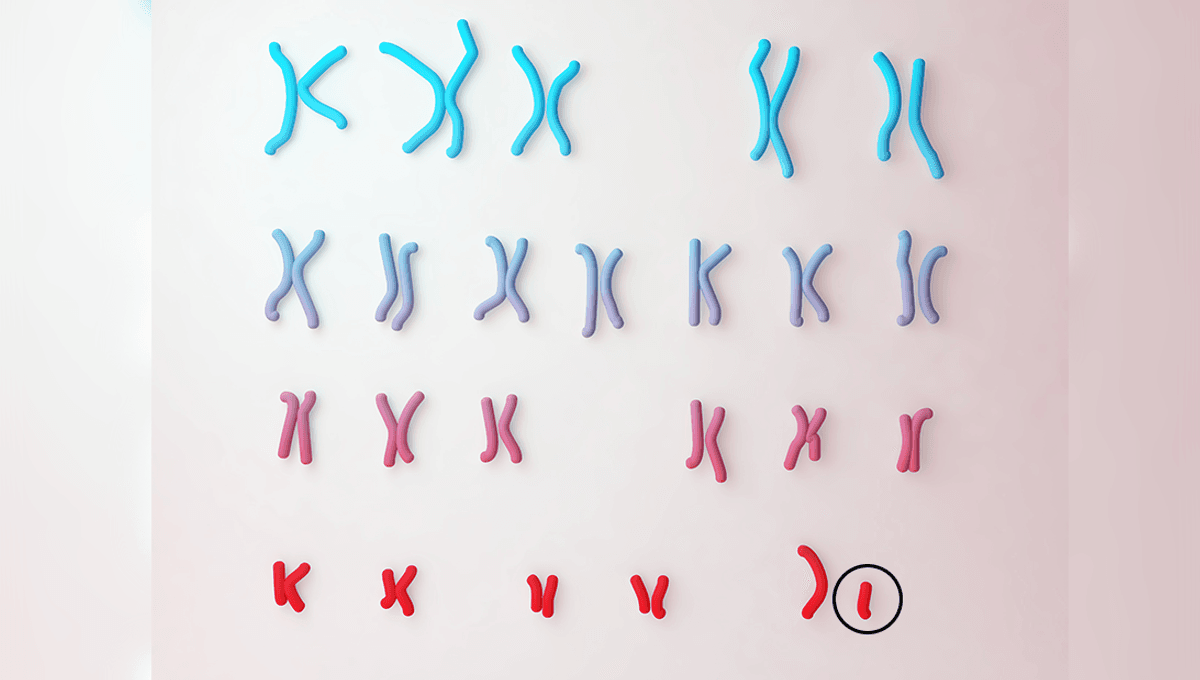
The human Y chromosome isn’t what it used to be – long gone are the days when it used to be the same size as its pal, X. It’s now much smaller, but is it set to disappear entirely? And if so, what would happen?
The human Y chromosome: an overview
Most humans have 23 pairs of chromosomes. One of these pairs is the sex chromosomes. Unless someone has a chromosome abnormality, it usually consists of either two X chromosomes or an X and a Y.
Though it’s often thought of as the “male” chromosome, the Y chromosome on its own doesn’t actually solely define a person’s sex – which is going to be an important factor later on. It does, however, contain a gene called SRY, which triggers the pathway leading to the development of testes.
The Y chromosome is also the smaller of the pair. The sex chromosomes are thought to have first evolved in mammals around 180 million years ago. In the time since humans popped up, our version of X has remained fairly stable – but the same can’t be said for Y, which has shrunk.
It’s now only a third of the size of the X chromosome and contains just 106 protein-coding genes compared to the X, which has around 900.
Why has the Y chromosome shrunk?
The answer to why the human Y has become smaller lies in one of the ways our chromosomes attempt to ensure genetic variation and avoid passing on mutations to offspring: meiosis.
If your memories of high school biology are a little hazy, here’s a reminder. Meiosis is the process by which sperm and egg cells are created. As part of this process, pairs of chromosomes swap over bits of their arms. Y, however, can’t swap with X because they aren’t similar enough, and so it’s left stuck with its mutations – which evolution’s selective forces are keen to get rid of.
“The X is fine because in females it gets to recombine with the other X but the Y never gets to recombine over almost its entire length, and shutting down that recombination has left the Y vulnerable to all these degenerative forces,” Dr Jennifer Hughes, a researcher at the Whitehead Institute, told BBC News, “which is why we’re left with the Y we have today.”
Is it going to disappear?
The simple answer to whether or not the Y chromosome will disappear from existence is that we don’t know. It’s not entirely impossible, but that doesn’t mean it will happen either, and scientists are certainly divided on the matter.
Professor Jennifer Graves, for example, has long suggested that the Y chromosome may disappear and could even do so in as soon as 4.6 million years – that’s not far away at all in evolutionary terms, though not close enough that we’d have to worry about it.
On the other hand, a study back in 2012 found that the human Y chromosome had lost only one gene in the 25 million years since humans and rhesus monkeys diverged and none since we diverged from chimpanzees. Another found that Y chromosomes have developed structural changes that help to protect against degradation. This suggests that Y chromosome degradation might actually be slowing down, and perhaps even stopping.
“The Y is not going anywhere and gene loss has probably come to a halt,” Hughes, one of the 2012 study’s authors, also told BBC News. “We can’t rule out the possibility it could happen another time, but the genes which are left on the Y are here to stay.”
What might happen if it does disappear?
Regardless of the actual outcome, scientists also have some thoughts about what might happen if the Y chromosome does in fact disappear. Will the male population also disappear?
Not necessarily – as mentioned previously, the Y chromosome doesn’t solely determine sex. Lots of other genes involved in sex development are found on other chromosomes, including SOX9, which also has a critical role in male sexual development.
One of these genes could potentially take over the process. Scientists have discovered this has happened in the Amami spiny rat, whose Y chromosome and SRY gene have disappeared completely – though plenty of males remain.
In a study investigating how this was a possibility, the authors concluded that a small, male-specific change in the DNA sequence near SOX9 might be working as functional replacement for SRY, which produces the protein that normally activates SOX9 – thus males could still develop.
Theoretically, something similar could happen in humans. How likely is it? It’s unclear, and the evolutionary process would probably be so slow that, unless we suddenly develop an immortality pill or invent a time machine in the near future, we won’t be here to find out.
All “explainer” articles are confirmed by fact checkers to be correct at time of publishing. Text, images, and links may be edited, removed, or added to at a later date to keep information current.
Source Link: What’s Happening With The Y Chromosome?